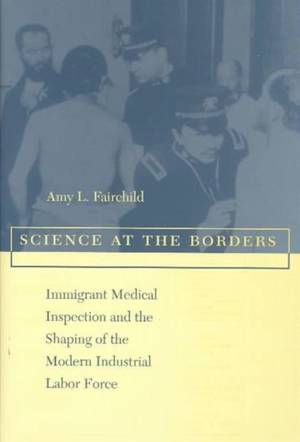
- Retrait gratuit dans votre magasin Club
- 7.000.000 titres dans notre catalogue
- Payer en toute sécurité
- Toujours un magasin près de chez vous
- Retrait gratuit dans votre magasin Club
- 7.000.0000 titres dans notre catalogue
- Payer en toute sécurité
- Toujours un magasin près de chez vous
Science at the Borders
Immigrant Medical Inspection and the Shaping of the Modern Industrial Labor Force
Amy L. (Ohio State University) Fairchild
Livre relié
64,45 €
+ 128 points
Description
Throughout, Fairchild conveys the humanity of the story, offering detailed accounts of individual immigrants confronting a large scientific and medical bureaucracy.
Spécifications
Parties prenantes
- Auteur(s) :
- Editeur:
Contenu
- Nombre de pages :
- 408
Caractéristiques
- EAN:
- 9780801870804
- Date de parution :
- 30-07-03
- Format:
- Livre relié
- Dimensions :
- 235 mm x 158 mm
- Poids :
- 694 g

Les avis
Nous publions uniquement les avis qui respectent les conditions requises. Consultez nos conditions pour les avis.






